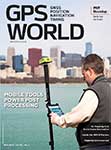Resumo do Webinar
Serão apresentadas as alternativas atualmente disponíveis para conectividade de dispositivos IoT (LoRA, SIGFOX, LTE CAT M1, LTE NB-IOT (1 e 2)), comparando as principais características de cada tecnologia, as melhores alternativas de aplicação das mesmas e em que situação é melhor usar qual tecnologia.
Além disso, será apresentada a infraestrutura disponível hoje no Brasil para cada tecnologia e o roadmap das operadoras para as alternativas apresentadas.
Convidados
Neimar Marques Duarte
Engenheiro eletrônico com experiência no desenvolvimento de hardware para sistemas baseados em FPGA. Atua como engenheiro de aplicações da Altera na Macnica DHW LTDA e com desenvolvimento de projetos eletrônico, consultoria e treinamentos na área de FPGA.
REGISTRO
Robust, Lightweight Protection for Challenging Harsh Environments using Parylene Conformal Coatings
May 29, 2019 at 1:00 PM EDT / 12:00 PM CDT / 10:00 AM PDT / 5:00 PM GMT
Sponsored by:

Webcast Description:
The electronics, aerospace, defense and oil & gas industries have long utilized conformal coatings to protect products from their surrounding environments. As technologies continue to progress, they are required to survive long-term exposure to very harsh environments, including the depths of space, years of widespread thermal cycles between land and air, harsh chemical and temperature exposure, and more. Many conformal coatings struggle to provide durable, lasting protection.
For over 45 years, Parylene conformal coatings have substantially enhanced the reliability of numerous devices and parts, including circuit boards, sensors, MEMS/semiconductor products, LEDs, implantable medical devices, and elastomeric and metal components, that are used in a wide array of applications and environments.
This webcast will offer an opportunity to learn more about Parylene conformal coatings – the coating process, applications Parylenes protect today, and the properties and benefits they can offer products, including:
- Thin, lightweight protection
- Truly conformal coverage, with no air-gaps or voids
- Excellent moisture and chemical barrier
- High dielectric strength
- Thermal stability up to 350°C long-term (450°C short-term)
- Waterproofing capabilities per IPX testing
- Lubricity/low coefficient of friction
The webcast will also introduce a new Parylene variant – halogen-free ParyFree®, and will discuss advances in adhesion technologies and the role Parylene plays in advanced micro and nano-level technologies.
As applications, materials and technologies evolve, lightweight robust Parylene coatings will continue to safeguard and add value to technologies around the world.
Register for this webcast and learn more!
Presented by:

Tim Seifert
Aerospace & Defense Market Manager
Specialty Coating Systems

Rakesh Kumar
Vice President of Technology
Specialty Coating Systems, Inc.
30 / 05 / 2019
Automotive EMI Reduction Techniques, Applications and Solutions
Apr 23, 2019
Date: Thursday, May 30, 2019
Time: 11:00 AM Eastern Daylight Time
Sponsor: Texas Instruments
Duration: 30 Minutes
Register Today!
Summary:
The world is hurtling towards Electric Vehicles and Autonomous Cars. Semiconductor content of cars is expected to increase ~ 10x by 2025. In this presentation we show challenges in EMI for new increasing demanding automotive systems like ADAS, cameras, instrument cluster and infotainment. We will discuss EMI mitigation techniques like filtering, spread spectrum and E-field shielding and compared the results.
This session will cover:
- EMI noise sources and near E-Field coupling
- EMI mitigation techniques, like switch node shaping, spread spectrum, and E-Field shielding techniques
Speakers:

Robert Loke, Validation Engineer, Texas Instruments
Robert Loke is a validation engineer in the Texas Instruments buck switching regulators group and a part of the Member Group, Technical Staff. Robert has conducted over 7 years of research in autonomous mobile systems and medical and has over 13 years of experience in the semiconductor industry focusing on power. His expertise is in product definition and strategy, systems, applications and validation.

Robert Blattner, Senior Application Engineer, Texas Instruments
Robert Blattner is a senior application engineer in the Texas Instruments buck switching regulators group. Robert has over 35 years of experience in the semiconductor and consumer electronic industry and a MEE from Rice University. His expertise is in device design, system and product definition, systems and applications.


Title: How to Easily Build Functional Safety into Your Automotive Cluster Design
Date: Thursday, May 30, 2019
Time: 9:00 am PDT | 12:00 pm EDT | 6:00 pm CEST
Fully programmable instrument clusters are becoming common in automobiles across varying price categories. This presents a significant challenge for developers of instrument cluster graphics. Where once an analog instrument cluster displayed mission-critical information like warning signs and PRNDL status, now the same information needs to be represented on a digital display.
This webinar explores the challenges associated with implementing high-resolution digital instrument cluster displays, and the tools needed to to meet the ISO 26262 standard for safe boot, complex embedded algorithm processing, and functional safety diagnostics. We’ll show you how to ensure fail-safe performance of instrument cluster graphics, and present examples of cost-effective solutions that OEMs and Tier-1 manufacturers are using to successfully implement safe instrument clusters for production.
Attendees will learn:
- Functional Safety 101: The automotive instrument cluster challenge
- Automotive-proven solution for ISO 26262-compliant automotive displays
- A breakdown of this solution architecture—from tools to hardware
Can’t attend the live event? We’ve got you covered! Register now, and we’ll send you a link to view the webinar on-demand after the live broadcast.




































